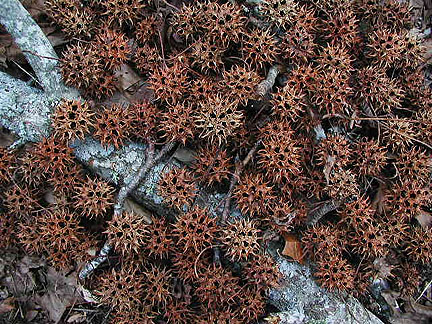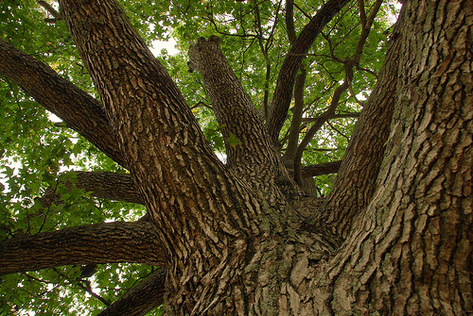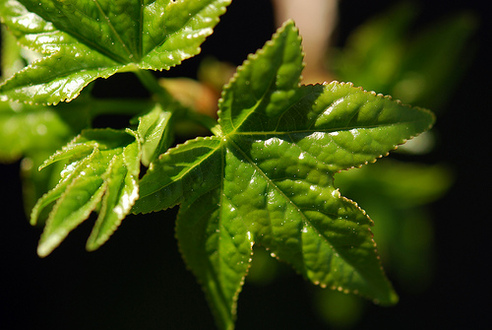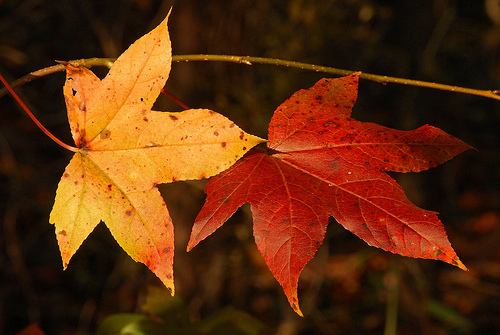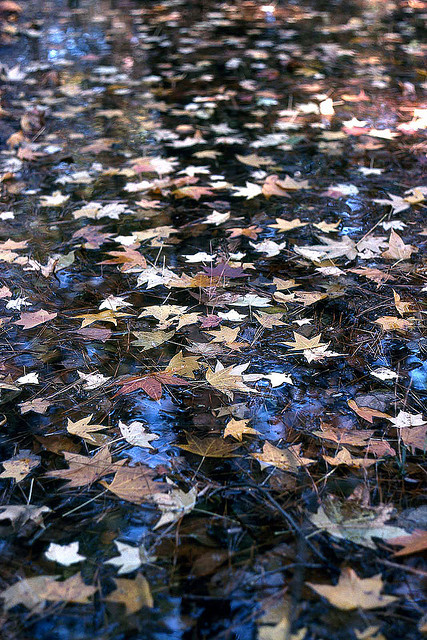No matter the season, it’s easy to know when you’re standing underneath a sweetgum. Scattered on the ground are those round prickly balls, about an inch and half in diameter, with little holes between the prickly parts. These pointy balls house the seeds of the sweet gum tree, and are commonly referred to as “gum balls.” If it’s winter and you find yourself stepping on gum balls in a parking lot or in someone’s yard, look up, and you’ll usually see many more gum balls still hanging onto the tree by their three inch long stems.
These fruit balls provide food to many species of bird and mammal. One day I sat in my car and watched a gray squirrel sitting on a fence in front of me systematically nibble off all the spines of a sweet gum ball to get at the enclosed seeds. So the next time you feel like griping or cursing over all those prickly gum balls, remember, to a lot of animals they are food for the winter. You can learn to love them, you can! Well, maybe not...But tolerate them, yes!
Notice the tree trunk, fairly dark, mildly furrowed, and heavy looking, with somewhat of an “alligator” skin appearance. The limbs tend to come somewhat horizontally off the trunk and somewhat evenly spaced in altitude, to make sweet gums, even very large ones, some of the best trees for climbing, as many brave children will attest.
The leaves of the sweetgum are very distinctive, usually five pointed, six or so inches across, with a star or perhaps starfish shape and appearance. The top of the leaf is glossy or shiny, which, given its star like shape, adds to its beauty. In the fall the sweetgum leaves tend to turn a deep crimson red, adding splash to the yellow dominated palate of the Midlands autumn. Below is a photo of a thick glossy new leaf in spring, and below that two dry leaves in the fall.
Walk through any recently abandoned field and you will probably find many young sweetgums mixed with the usual opportunistic pine trees. Though slower growing than the pines which are usually first to take over a field, and thus left in their shade for a time, the sweetgum is one of the first hardwoods to rise above the pines and begin the transition from pine to mixed hardwood forest.
So, why is this tree called a “gum” tree anyway. The sweet gum tree produces a sap or resin (that flows more freely the farther south you go, giving it the name liquidambar) that when hardened can be chewed as a gum. This resin of the sweetgum tree was long reputed to have medicinal qualities, used for the treatment of skin sores. It was widely used for treatment of dysentery during the Civil War.
The sweetgum tree provides one of our most important furniture woods, used mainly for veneers, but also for cabinets and boxes and toys, and even as pulpwood.
I have loved sweetgums my whole life. I took the photo below, or sweetgum leaves on water, in about 1977, from the top of the dam of a small pond near my house in the Forest Lake area.
